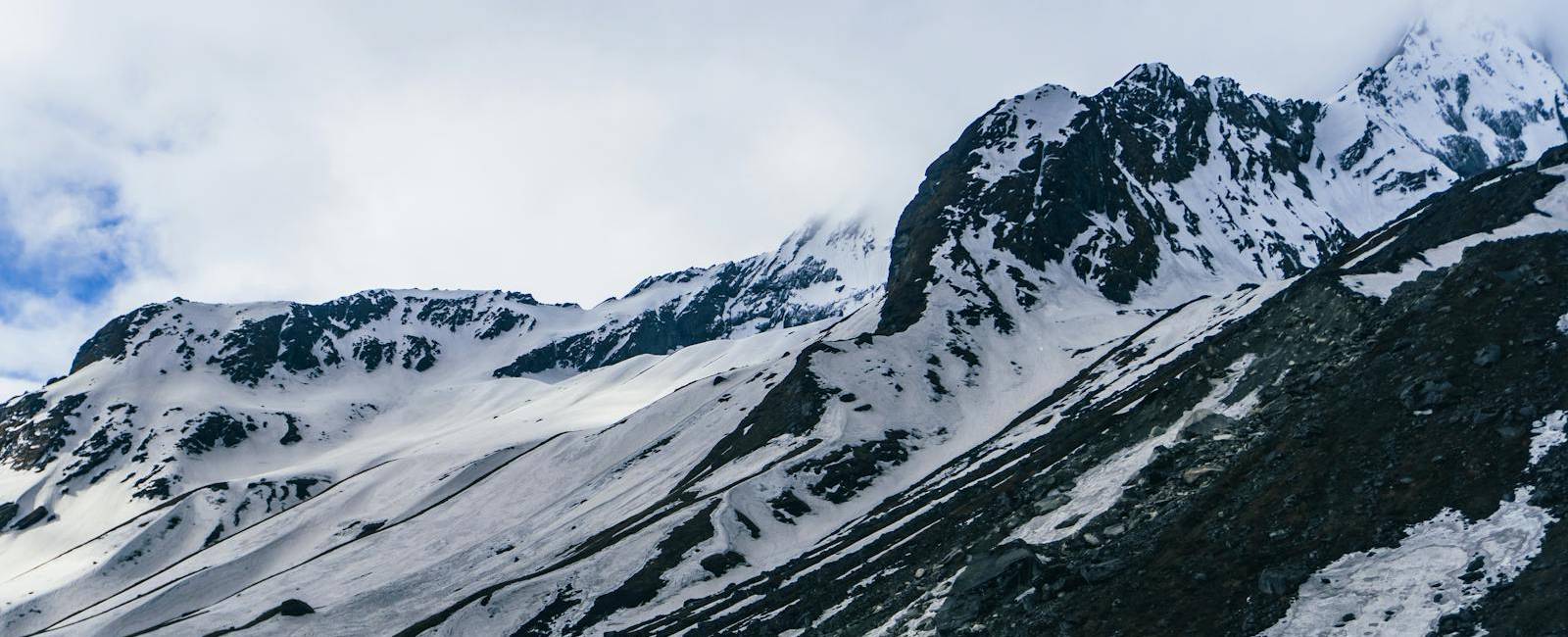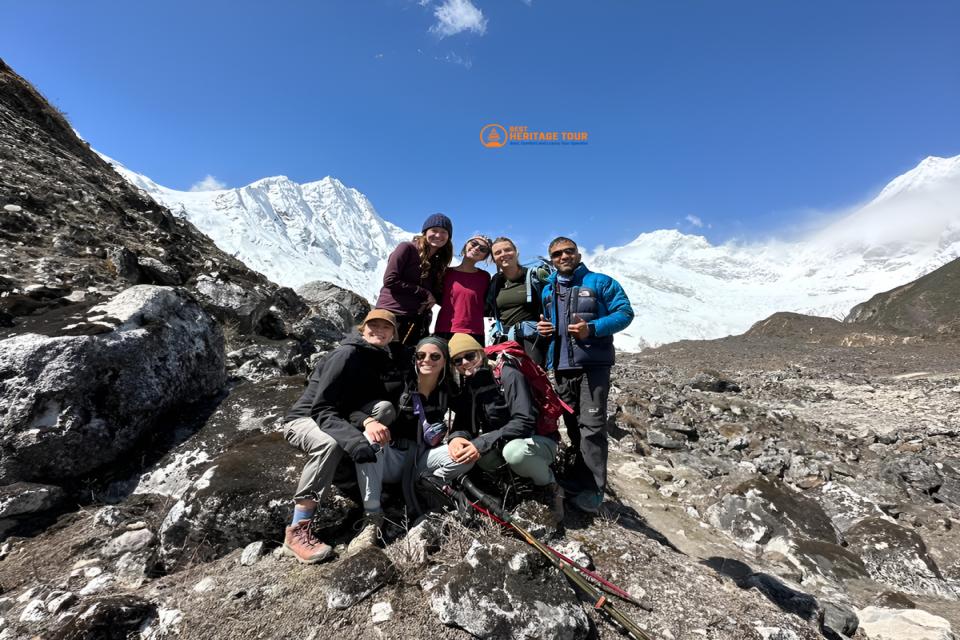For adventurous souls seeking remote mountain landscapes, authentic cultural encounters, and fewer crowds, the Manaslu Circuit Trek is often at the top of the list. This off-the-beaten-path route circles Mt. Manaslu (8,163m) - the eighth-highest peak in the world and offers breathtaking scenery, ancient Tibetan Buddhist villages, and the thrill of crossing the dramatic Larkya La Pass (5,160m).
But with its remote setting, high altitude, and challenging terrain, one pressing question naturally arises:
Is the Manaslu Circuit Trek safe?
Whether you're an experienced trekker, a solo traveler considering this adventure, or a cautious tourist doing your research, safety is a valid concern. After all, the Manaslu region lies far from urban centers, has limited infrastructure, and requires a special permit to access. Yet, thousands of trekkers complete it each year safely - with the right planning and support.
In this blog, we break down every factor that influences safety on the trail - altitude, trail difficulty, weather, solo trekking rules, guide requirements, emergency protocols, and more, so you can feel fully prepared and confident before you lace up your boots.
Let’s dive into the details and answer the question once and for all: Is Manaslu Circuit Trekking truly safe?
Understanding the Manaslu Circuit: What Makes It Unique?
The Manaslu Circuit Trek takes you around the majestic Mt. Manaslu (8,163m), the eighth-highest mountain in the world. The trail meanders through deep valleys, suspension bridges, waterfalls, and Tibetan-style villages before crossing the high-altitude Larkya La Pass (5,160m) - the highest and most dramatic point of the journey.
Unlike the bustling Everest or Annapurna regions, Manaslu offers a more peaceful experience. This remoteness is part of its charm, but it also raises legitimate safety questions. Let’s break those down.
So, Is Manaslu Circuit Trek Safe?
The short answer: Yes, the Manaslu Circuit Trek is safe - with proper planning, a licensed guide, and appropriate gear. Here's a detailed look at the various safety elements involved:
1. Altitude & Acclimatization: Preventing AMS
One of the biggest risks in the Manaslu region is Altitude Mountain Sickness (AMS), particularly when crossing Larkya La Pass. However, a well-paced itinerary with gradual elevation gain and at least one acclimatization day (usually in Samagaon) significantly reduces this risk.
How to stay safe from altitude sickness:
-
Hydrate frequently and eat nutritious meals.
-
Ascend slowly - no more than 300 - 500m per day.
-
Listen to your body; descend if symptoms get worse.
-
Include an acclimatization day in Samagaon (3,530m).
2. Trail Conditions: Stable but Challenging
The Manaslu trail includes steep ascents, rocky paths, and narrow suspension bridges. While the trails are well-established and maintained, parts of the route can be slippery or exposed - especially in rainy or snowy conditions.
Safety tips for the trail:
-
Wear high-ankle trekking boots with good grip.
-
Use trekking poles, especially during descents.
-
Start early each day to avoid afternoon weather shifts.
-
Avoid solo night trekking.
3. Larkya La Pass: The High Point (Literally)
The Larkya La Pass (5,160m) is the toughest day of the trek, both physically and mentally. Weather here can change quickly. With the right gear, an early morning start, and your guide’s pacing, it’s a safe and exhilarating experience.
Tips for Larkya La Pass crossing:
-
Begin your climb before sunrise.
-
Wear layers, gloves, and windproof jackets.
-
Always follow your guide’s instructions on pacing and breaks.
-
Keep energy snacks and hydration within reach.
4. Solo Trekking: Is It Safe to Go Alone?
No, solo trekking is not allowed on the Manaslu Circuit due to its status as a Restricted Area. You must hire a licensed guide and be in a group of at least two (excluding the guide). This regulation is actually a major safety benefit.
Why it’s safer with a guide:
-
Guides are trained in first aid and high-altitude response.
-
They understand the terrain, culture, and logistics.
-
In emergencies, they can coordinate rescue or evacuation.
-
You’ll have local language support and assistance with lodges.
5. Remote Location & Emergency Support
The remoteness of the Manaslu region means you’ll be far from major cities or hospitals. However, with mobile networks in some areas, satellite phones, and evacuation services available through travel insurance, trekkers are still well supported in case of emergencies.
Stay prepared by:
-
Buying comprehensive travel insurance that includes high-altitude trekking and helicopter evacuation.
-
Carrying a basic first aid kit with essentials like Diamox, electrolytes, and blister care.
-
Registering with local checkpoints en route.
6. Permits & Regulations: Legal Safety Measures
Trekking Manaslu requires several permits, which helps regulate traffic and ensure safety:
-
Restricted Area Permit (RAP)
-
Manaslu Conservation Area Permit (MCAP)
-
Annapurna Conservation Area Permit (ACAP)
Your guide or trekking agency (like Best Heritage Tour) handles all of this, keeping you compliant and visible to local authorities.
7. Seasonal Weather Risks
Manaslu can be trekked in spring (March-May) and autumn (September-November). These seasons offer the safest weather - clear skies, stable temperatures, and dry trails.
Avoid:
-
Monsoon (June-August): Landslides, leeches, muddy trails.
-
Winter (December-February): Snowfall, trail blockages, freezing nights.
8. Lodge and Food Hygiene: Safe and Satisfying
You’ll find basic but clean teahouses along the trail offering dal bhat, soups, tea, and even pancakes. These lodges are operated by locals and cater to trekkers daily, so hygiene is well-managed.
To stay healthy:
-
Stick to cooked meals and boiled/filtered water.
-
Avoid raw vegetables or uncooked foods.
-
Carry water purification tablets as backup.
9. Wildlife and Natural Hazards: Rare but Possible
The Manaslu region is home to animals like Himalayan tahr, blue sheep, and snow leopards but sightings are rare and not dangerous. Landslides and rockfalls can occur during monsoon or after heavy snow.
Best precautions:
-
Don’t trek during or just after heavy rain/snowfall.
-
Always follow trail signage and guide instructions.
Safety Tips at a Glance
-
Hire a licensed guide and porter through a trusted agency.
-
Stick to a proper acclimatization-based itinerary.
-
Trek in the best seasons: Spring or Autumn.
-
Carry a personal first aid kit and high-altitude meds.
-
Insure your trek with helicopter evacuation coverage.
-
Listen to your guide and take rest seriously.
-
Stay hydrated, nourished, and layered up!
Conclusion: Yes, the Manaslu Circuit Trek is Safe - If You Do It Right
Trekking the Manaslu Circuit is a safe and enriching adventure for those who prepare properly. With a smart itinerary, expert guidance, and basic health precautions, you’ll enjoy one of Nepal’s most rewarding trekking experiences - without unnecessary risks.
To plan your Manaslu trek safely and professionally, reach out to a trusted team like Best Heritage Tour. Their local expertise, friendly service, and customized itineraries ensure a smooth, unforgettable Himalayan journey.
Contact Best Heritage Tour
Phone/Whatsapp: +977-9851149197
Email: info@bestheritagetour.com / bestheritagetour@gmail.com
Website: bestheritagetour.com
Office: Thamel Marg, Kathmandu, Nepal
Ready to trek safely and confidently? The Manaslu Circuit is calling.
Author: Best Heritage Tour
Date: 29th July, 2025


